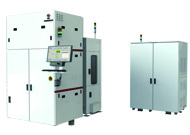So what difference will all of this new companies/institutions make? If they are so good, why didn't they go help out SMEE in their development 10 years ago, or 6 years ago when the sanctions made the threat of even basic DUV machines being cut of very real?
Because decades ago, 10 years ago (and even 6 years ago), there was limited impetus to seriously drive for domestic products, given they could attain foreign products that were more competitive and available through trade and the "free market".
The lack of demand and need meant that government strategic directives alone would not be enough to force customers to take a risk on products that were less capable and less mature than established overseas players, all while still trying to attain a profit and compete with foreign companies as well as other domestic companies.
But it is only in the last few years that the customers in China truly realized how vulnerable they were to sanctions and being cut off, which has resulted in the emerging captive market that we are starting to see and the entire tech stack re-orientate.
If your question is why has it taken SMEE so long to develop domestic DUV that customers would find viable, I would actually flip the question around and ask why do we think it could have been done faster? Where was the need, the demand or the urgency for domestic DUV machines until the last few years?
Even if we want to talk about DUVs, the fact that customers have been able to buy ASML DUVs in the last couple of years has likely produced a slight drag effect on the priority and urgency of SMEE's DUV product.


